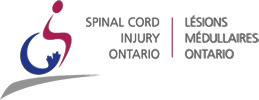If you’ve been the victim of a car accident, photographs can be very effective real time evidence in your personal injury claim. Without pictures, insurance companies are left with incomplete police reports and the verbal testimonies of those involved. Photos that you take immediately following your car accident can be helpful in documenting the damage to both cars, the position of the cars after the collision, and any debris at the scene.
What Type of Pictures can help at an Accident Scene?
Even after the accident has been cleaned up and cars have been moved, there are more photos that may be helpful to your case. The photos can paint a picture of the location of the accident, driving conditions at the time, the position of the vehicles, collision points, and a host of other accident details. Keep in mind the following tips when taking photos at the scene:
- Photograph all the vehicles involved and their relative positions from all angles to establish the boundaries of the crash scene and the impact zone.
- Photograph injuries to you or any other persons, including cuts, bruises and scrapes.
- Broaden the view and take photos of traffic indicators, street layout and landmarks if any.
- Photograph weather conditions.
- Get close-ups of your car’s damage.
- Look for broken glass and damaged car parts.
- Photograph damaged street signs, guardrails, trees, or other stationary objects damaged by the accident.
- Include photos that identify the time and date of the accident.
- If there were witnesses to the car accident, find out where they were and take photos from their point of view.
- Look for skid marks. The location where tire marks start and the direction of the marks.
- Make sure also to take shots of the vehicles’ identifying features such as license plates.
- Look inside the vehicle and take photographs of any interior damage, deployed airbags, seatbelts, and so forth.
Ultimately, the circumstances of each accident will determine what type of pictures should be taken. As a general rule, however, it is best to take as many pictures as possible. Even when the police arrive, you should still take as many pictures as possible because you may obtain picture evidence that the police could not.
Not all of these photographs are necessary in every accident, and there may be other important photographs that are not covered here. Mazin & Associates, PC, Personal Injury Lawyers will be better able to advise you on what photographic evidence you need for your particular case. Call us for a free initial evaluation following your accident at (416) 625-2122.







